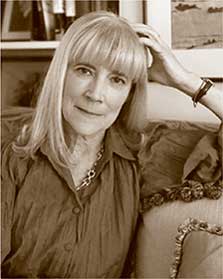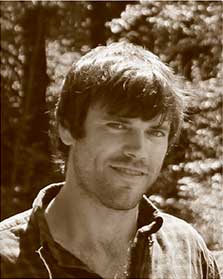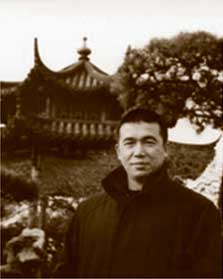LOOKING EAST
William Howard Taft and the 1905 U.S. Diplomatic Mission to AsiaThe Photographs of Harry Fowler Woods

“The success of this visit by the Taft delegation has an important significance even today. It teaches us a lesson that the conflicts between sovereign countries should be, and can be, resolved with active diplomatic means.”
—Lin Jianhua, President of Zhejiang University
MEET THE AUTHORS

Margo Taft Stever
About Margo Taft Stever

James Taft Stever
About James Taft Stever

Hong Shen
About Hong Shen
Poem by Jeffrey Harrison
Edited by Kevin Grace
Message from Santa J. Ono, President of University of Cincinnati 2012-2016
LOOKING BACK, LOOKING FORWARD THROUGH LOOKING EAST
A look back at the 1905 yearbook for the University of Cincinnati reminds us just how much has changed in the 110 years since William Howard Taft’s voyage to Hawaii, Japan, the Philippines and China. The pages of the 1905 Cincinnatian show no names or faces of Asian heritage among the UC faculty or students. Faculty connections to France, Germany, Spain, Italy, Greece, Peru and other international destinations are mentioned, but the only Asian references appear to be in a satiric section with a line referring to Port Arthur and the Russo-Japanese War and another to a “Chinaman.” Taft’s listing as a faculty member in the law school notes his leave of absence for the year for apparent good reasons as he served as the U.S. Secretary of War.
Fast forwarding to UC today, we find a sharp and encouraging contrast. UC has become a global university. In recent years, our international student enrollment has risen to record highs along with our total enrollment. Of our nearly 3,000 international students who travel from abroad to study at UC, more than three quarters come from Asia, with the majority from China followed by India. Of UC’s total enrollment of approximately 43,000 students, a little more than three percent have Asian, Hawaiian or Pacific Islander heritage. That does not include those who identify themselves as multiracial. Our alumni live all around the world.
For me, Taft’s historic trip to Asia and our nation’s relationship to Asia take on personal, not just academic, significance. I am the son of Japanese immigrants who moved to the United States in the 1950s and I became a naturalized U.S. citizen. My wife’s parents were born in China and relocated to Canada. While the efforts of Taft, Alice Roosevelt, and their fellow-travelers in East Asia met with mixed success, they did widen the door to intercultural dialogue and greater understanding. Sixty years later in 1965, the anti-Asian immigration and naturalization policies of the United States were finally set aside.
Our university today has blossomed into a truly global university that seeks ever-wider opportunities to partner with higher education, business, and civic institutions in China and around the world. We encourage our students and faculty to venture forth to experience and learn firsthand about the many cultures of our planet. This is the best way we can honor and build on the legacy of Taft, his fellow-sojourners and their unprecedented journey of 11 decades ago.
Message from Lin Jianhua, President of Zhejiang University
Looking East: William Howard Taft and the 1905 U.S. Diplomatic Mission to Asia provides an interesting account of a little known episode in Sino-American diplomatic relations at the beginning of the 20th century, together with vivid snapshots taken by H.F. Woods. In 1905, W.H. Taft, the United States Secretary of War, and Alice Roosevelt, personal envoy of her father, President Theodore Roosevelt, led a high-grade American government delegation to visit China and to have face-to-face talks with Chinese rulers such as Empress Dowager Cixi and Yuan Shikai, with the result that a serious crisis in Sino-American diplomatic relations was successfully resolved.
The success of this China visit by the delegation has an important significance even today. It teaches us a lesson that the open conflicts between two sovereign countries should be, and can be, resolved with active diplomatic means, such as exchange of visits and peaceful negotiations by high-level officials. Military confrontation is never the best choice in solving a crisis. When the movement of embargo against American goods started in the coastal areas of China back in 1905, in strong protest against the discrimination and maltreatment of Chinese immigrants in the United States, many American merchants suffered a heavy loss in China trade. In retaliation, the U.S. administration had once considered the possibility of taking military measures in attacking the city of Canton. Fortunately, President Roosevelt rejected this extreme proposition. Instead, he sent the Taft delegation to China and in so doing, successfully maintained, or even improved, the peace and friendship between the two countries.
I am delighted to learn that the University of Cincinnati, alma mater of William Howard Taft, has published the English-language edition of this book, in cooperation with Zhejiang University Press. When I was president of Chongqing University a few years ago, I had personal experiences of cooperation with President Santa Ono of the University of Cincinnati in creating a joint teaching program, which was both successful and pleasant. In the publication of this book, I hope that Zhejiang University will be able to establish the same cooperative relationship with the University of Cincinnati.
Kimberly Allen's Review of Looking East in the fall issue of Village Voices
Looking East: More Than a Vision
“The East is a career.”—Benjamin Disraeli
Looking East: William Howard Taft and the 1905 U. S. Diplomatic Mission to Asia: The Photographs of Harry Fowler Woods by Margo Taft Stever, James Taft Stever, and Hong Shen. Edited by Kevin Grace. Wilmington, Ohio: Orange Frazer P, 2015. ISBN 978-1-939710-22-2. 291 pp. $39.95, cloth.
China, with more than one billion residents, stands at the precipice of being considered a world super-power, on par with the likes of the United States and Europe. The nation manufactures many of the goods people throughout the world take for granted. Japan was for many years, and remains, an economic force, producing high-end electronics, automobiles, and cultural content enjoyed globally. South Korea is home to electronics maker Samsung, whose cell phones, televisions and tablets help power homes and businesses everywhere. For those wondering about the ubiquity of labels like Made in China, Made in South Korea, and Made in Vietnam among others, Looking East: William Howard Taft and the 1905 U. S. Diplomatic Mission to Asia will be able to provide a great deal of context in answering some of those questions. The authors, two of whom are Taft’s collateral descendants and direct descendants of photographer and businessman, Harry Fowler Woods, catalog Taft’s efforts in building diplomatic and trade ties with the Asian continent. Then U. S. Secretary of War in President Theodore Roosevelt’s administration, William Howard Taft’s work builds in part on that of U. S. Secretary of State John Hay, who in 1899, penned the Open Door Note to China in an effort to make the nation more amenable to trade with the United States.
This volume is complete with maps of Asia in the cover pages, indices, and iconic photographs by Harry Fowler Woods. Woods’s photographs are historically important for research and study to both scholars and students, documenting a single but significant event in history of the Taft delegation’s diplomatic visit to China and other Asian countries. Now that Asia possesses a greater deal of economic and military strength, chiefly on the part of China, Looking East can provide some important historical context for the present complexities facing Asia, the United States and the world at large.
The first chapter of Looking East establishes several significant goings-on of 1905. Among these events is Japan’s victory in the Russo-Japanese War and China’s successful boycott of American products, which was meant to bring attention to the poor treatment of Chinese immigrants in the United States. These were but two events that put the West on notice that Asia was far from weak or backward in its thinking. The following illustrates some of the United States’ views on Asia, particularly, the Philippines: “In 1905, the United States engaged in a continuing, costly, and ultimately futile struggle with an insurgency in the Philippines in an effort to legitimize its civilizing mission and administrative colonial foothold in Asia” (3).
Asia, like much of the rest of the non-Western world, often found its people, land and resources held at the mercy of Western interests. The boycott by China five years after the Boxer Rebellion served notice that the nation would not be beholden to these interests. In a sense, that action helped set the country on its current course as a powerful entity. For much of the twentieth century, negative views of Asia by the West held stubbornly. Taft’s journey into Asia included luminaries such as Theodore Roosevelt’s daughter, Alice, and a long-time member of the U.S. House of Representatives, Nicholas Longworth. Additionally, the retinue included twenty-three U. S. Congressmen, seven senators, and a host of businessmen and their families (3). Looking East touches on the optics of Taft’s diplomatic mission, as well as the all-important motivations behind it:
In order to further understand why the S. S. Manchuria, peopled with Caucasian, Anglo-Saxon male politicians…felt empowered to cross the ocean to far-flung parts of the globe on what was widely viewed back home as a good-will trip, it is necessary to explore the unprecedented rise of the United States of America in the nineteenth century from a collection of “neo-European settler societies” in a vast wilderness to a position of near-global dominance resulting from a fast-developing industrializing society. (13)
The Stevers recognize the symbolism of this mainly white delegation set against the backdrop of a new and exotic locale, but still peppered with long-standing, Western colonial strongholds throughout. Ostensibly, one would conclude then that those strongholds would only be made firmer by the intention to expand American economic and political interests into the region. As such, the mission was meant in part to assist in the Russo-Japanese peace negotiations, showcase achievements in the Philippines, and strengthen the fragile “Open Door” policy in China (13). The chapter goes on to document, with brilliant photographs throughout, other journeys across Asia by Taft and his delegation.
Looking East is one of the most intriguing volumes to come along in a while to objectively frame some of the origins of East-West relations and how they reflect on our present-day, heavily connected culture. As political, economic, and cultural upheaval throughout Asia now has the power to cause waves throughout the industrialized world, it is important to understand how the West and Asia came to this point in history.
The epigraph by British author, Benjamin Disraeli, is perfectly apt where Looking East is concerned. Taft, for better or worse, built a great part of his own career on his 1905 diplomatic mission to Asia. It has helped to give us a world whose borders can disappear with the light-speed movement of information and ideas across the digital landscape. Eastern and Western cultures now have the ability to more easily merge and re-emerge as something new. Still, traditions and suspicions deeply held by those in the East and the West often present speed bumps that threaten to hinder greater ties and harm those who are nearly powerless in the face of this ongoing growth. In any case, Taft was helpful in cutting a path throughout the world with the equal connective capabilities of the ancient Roman roads and the Silk Road.
— Kimberly Allen
